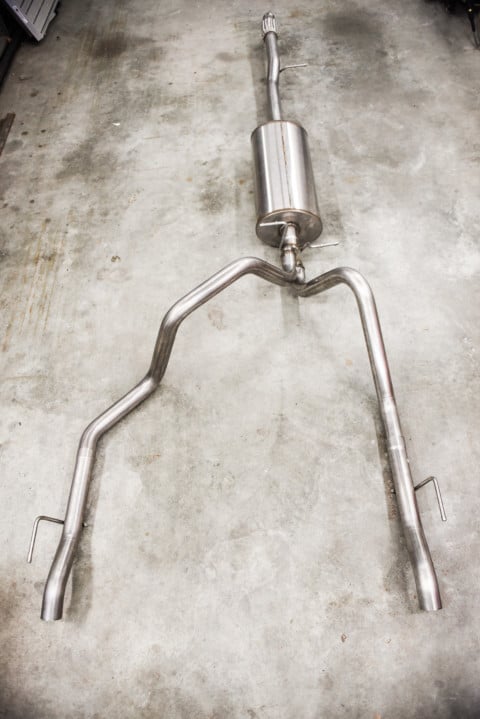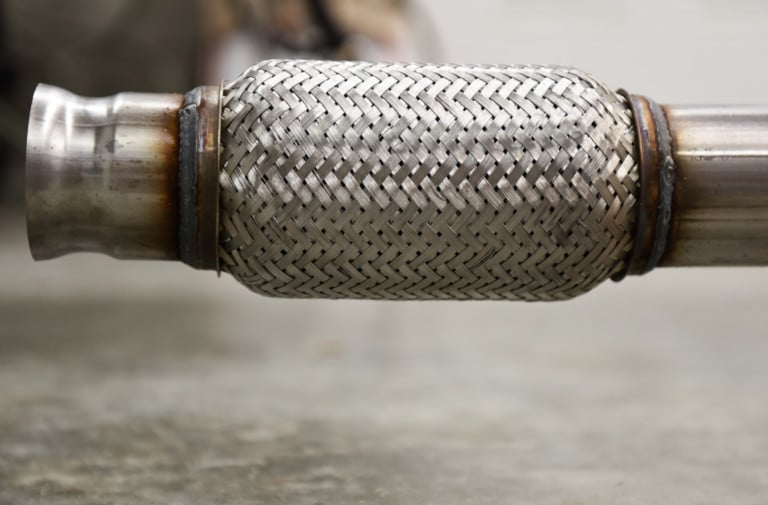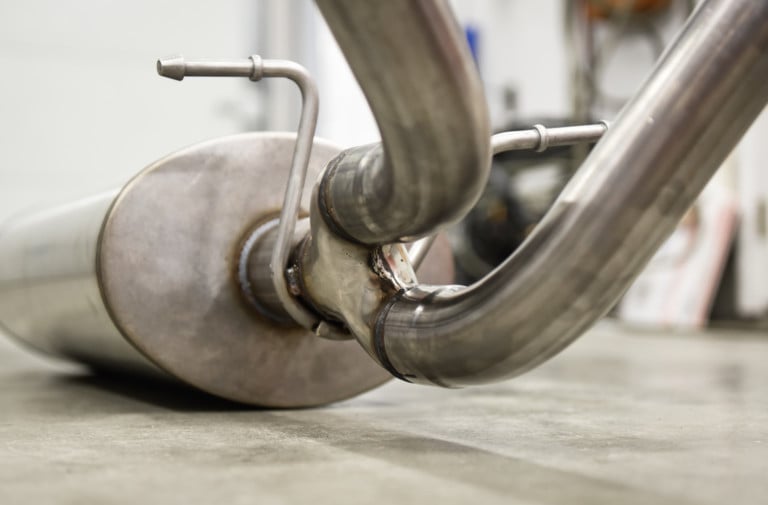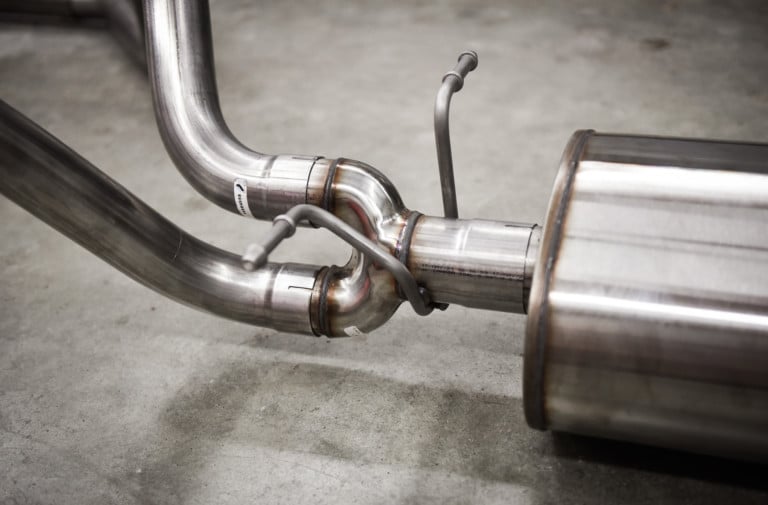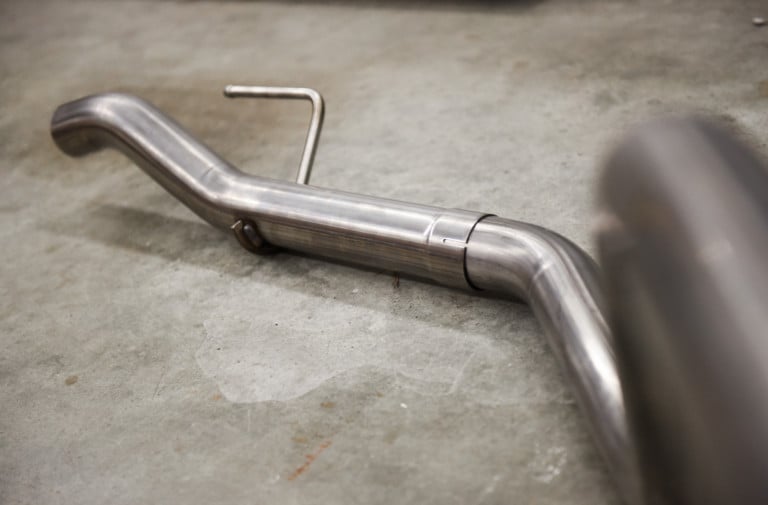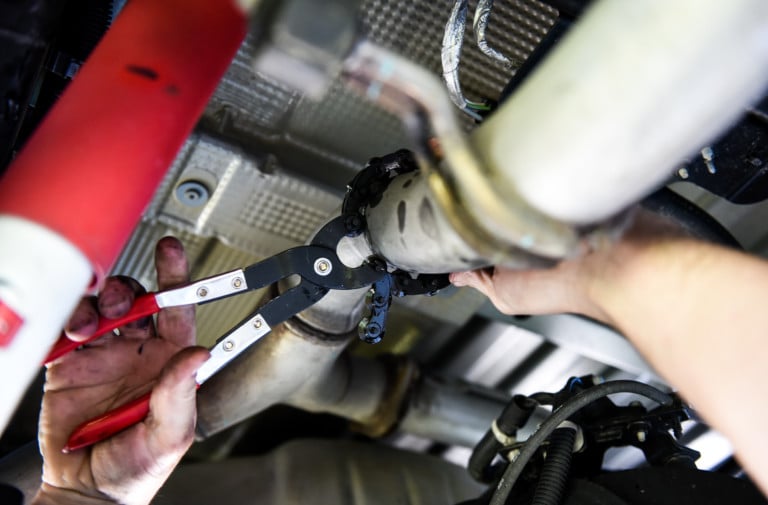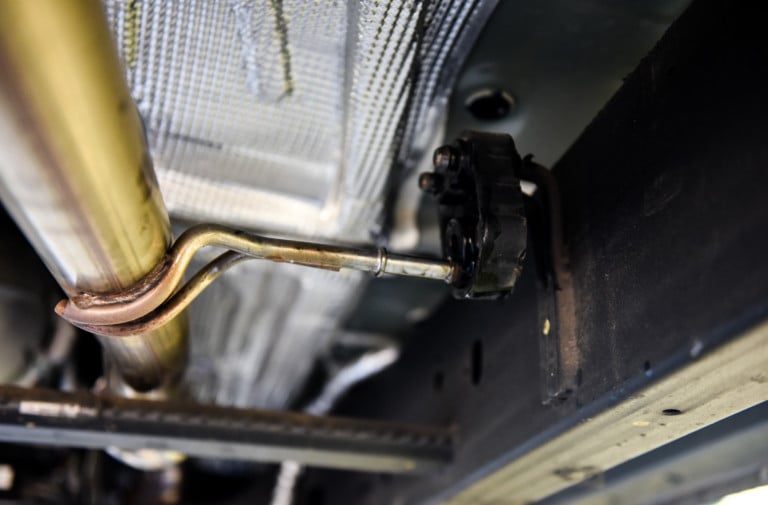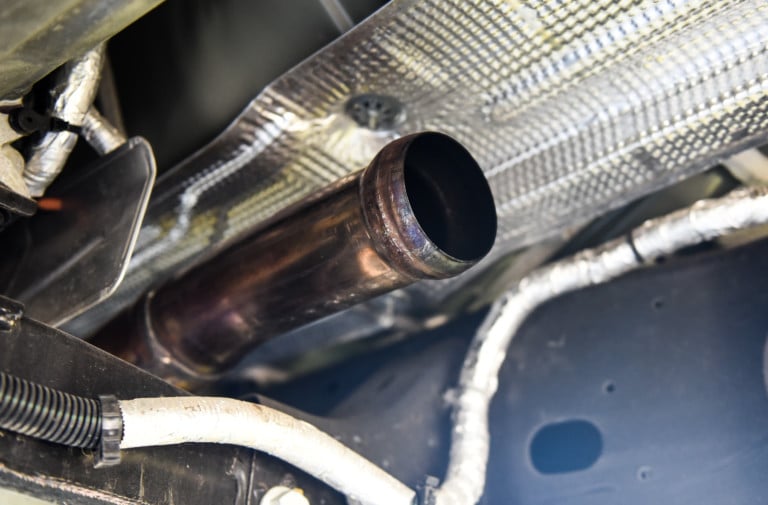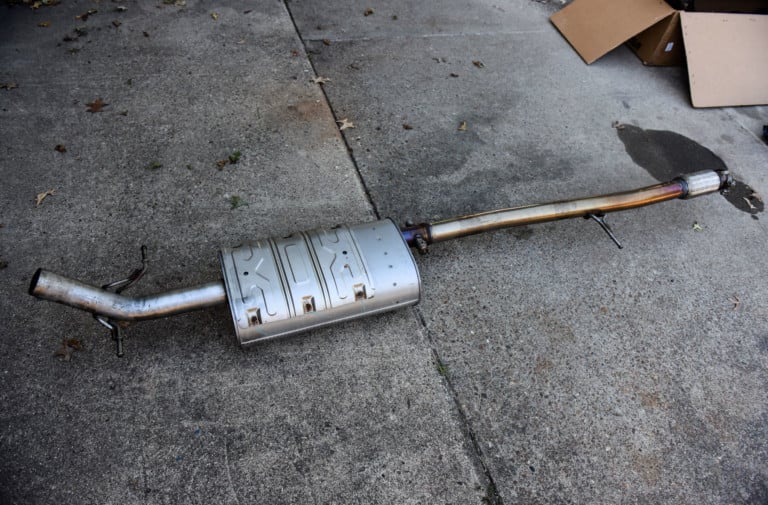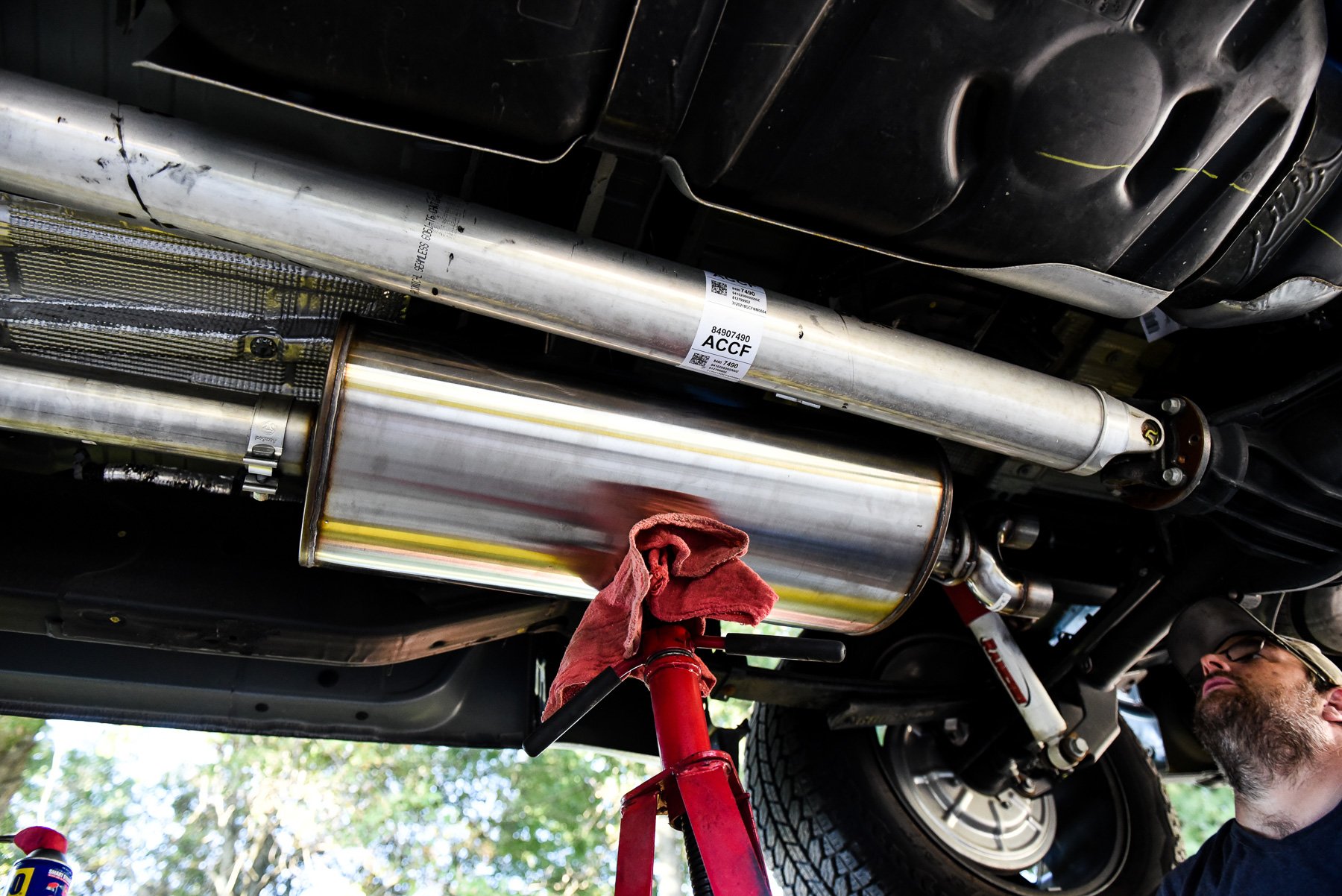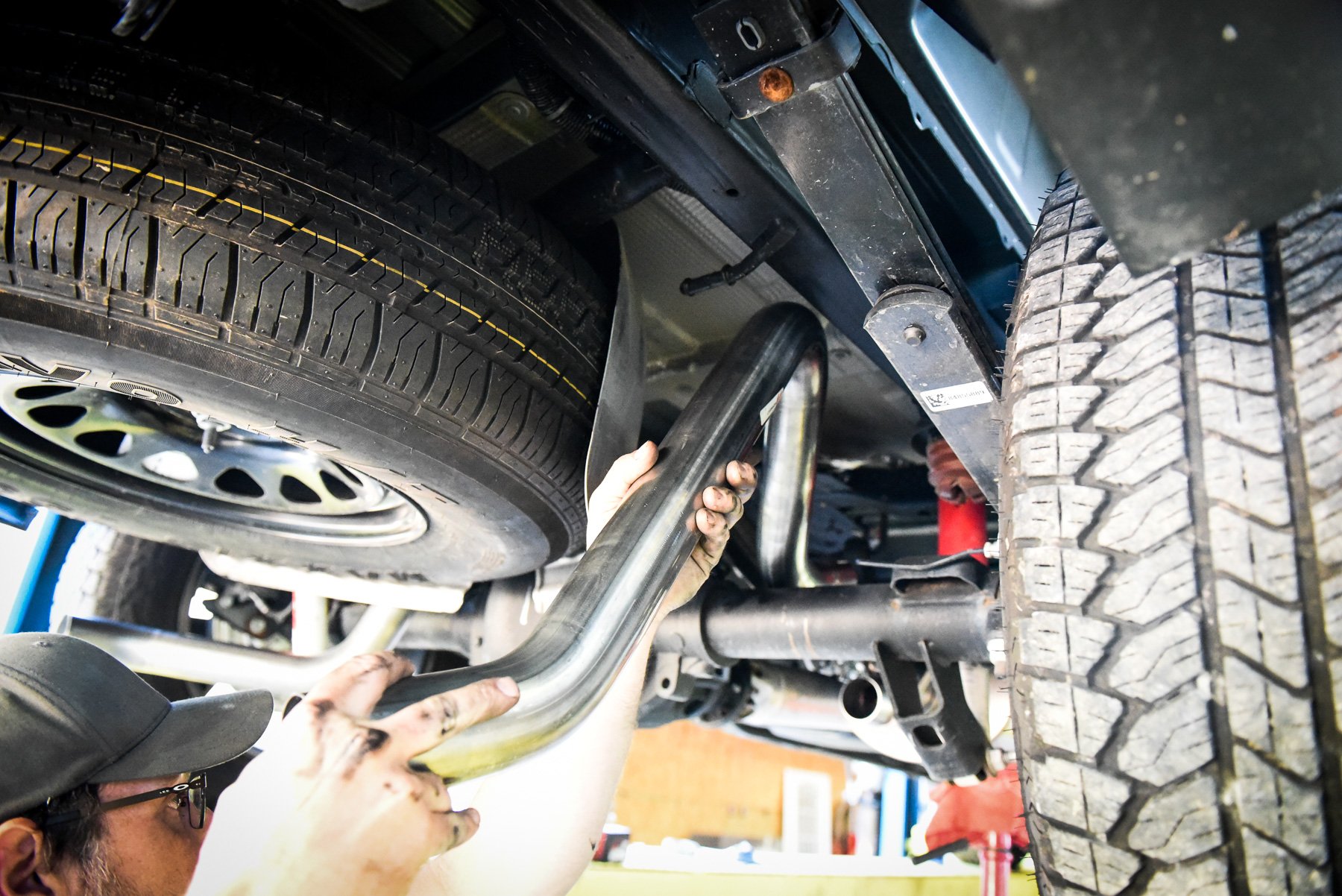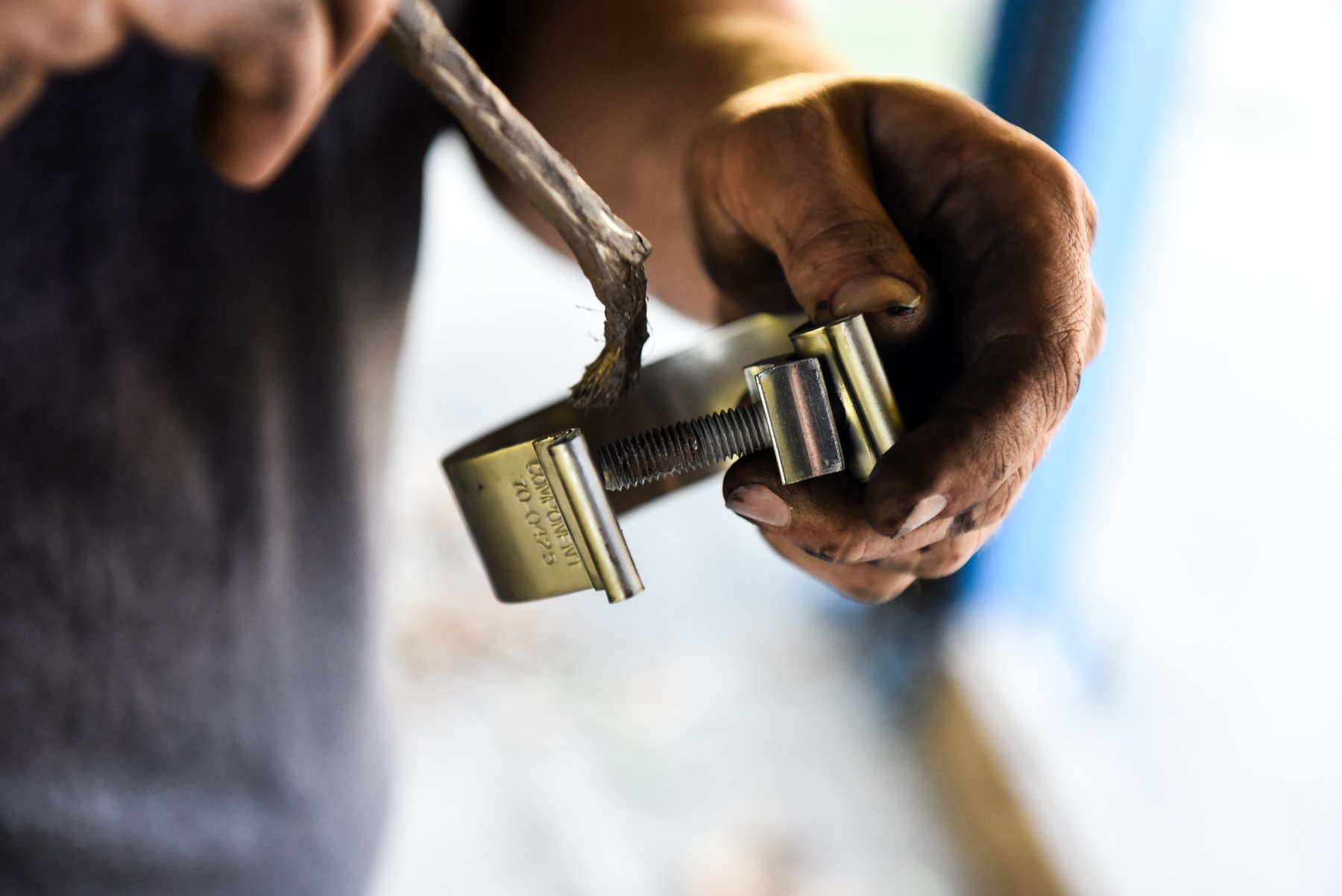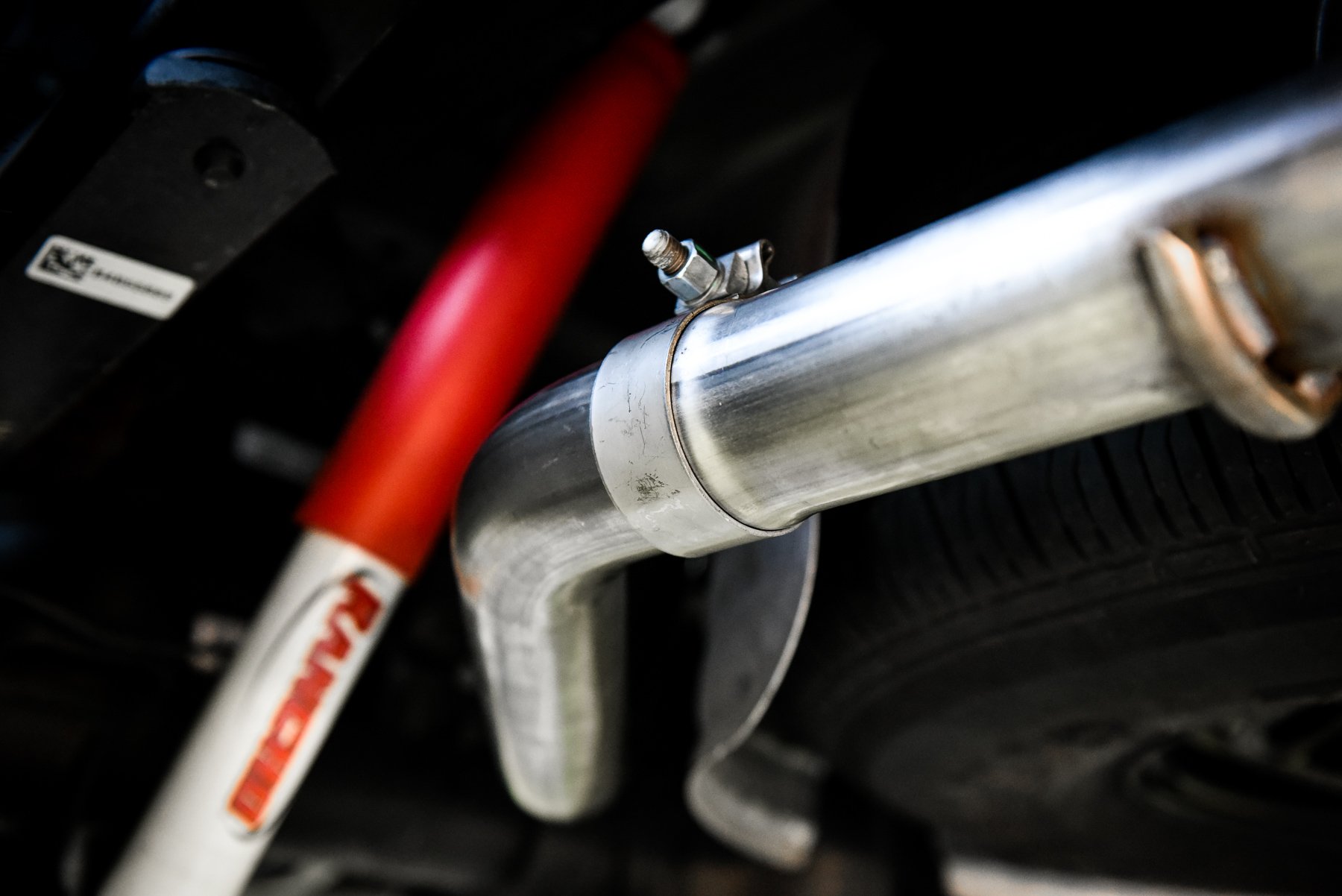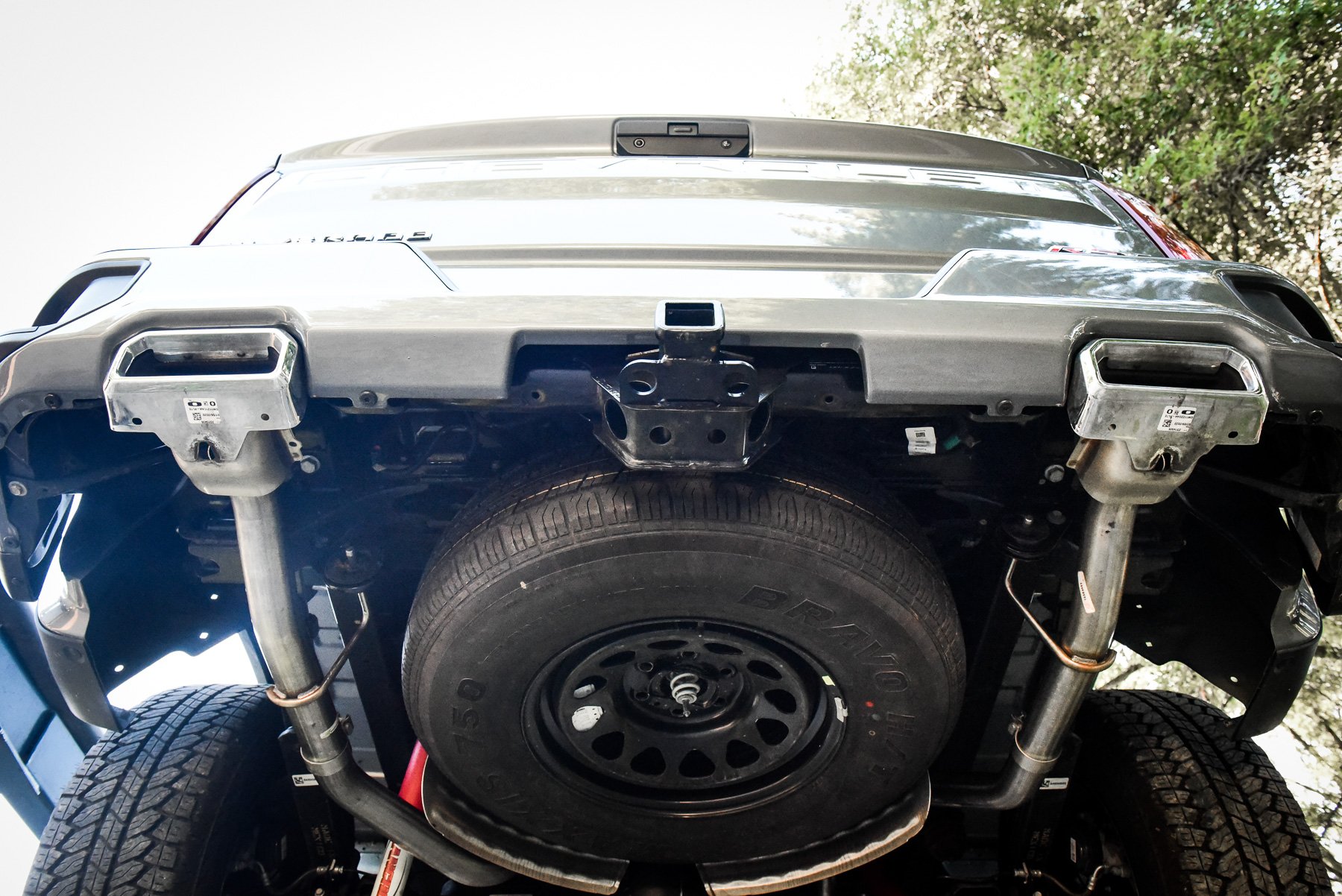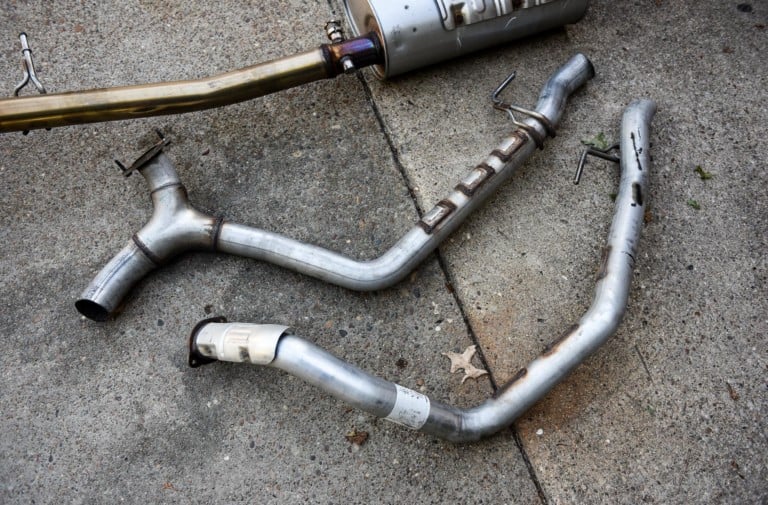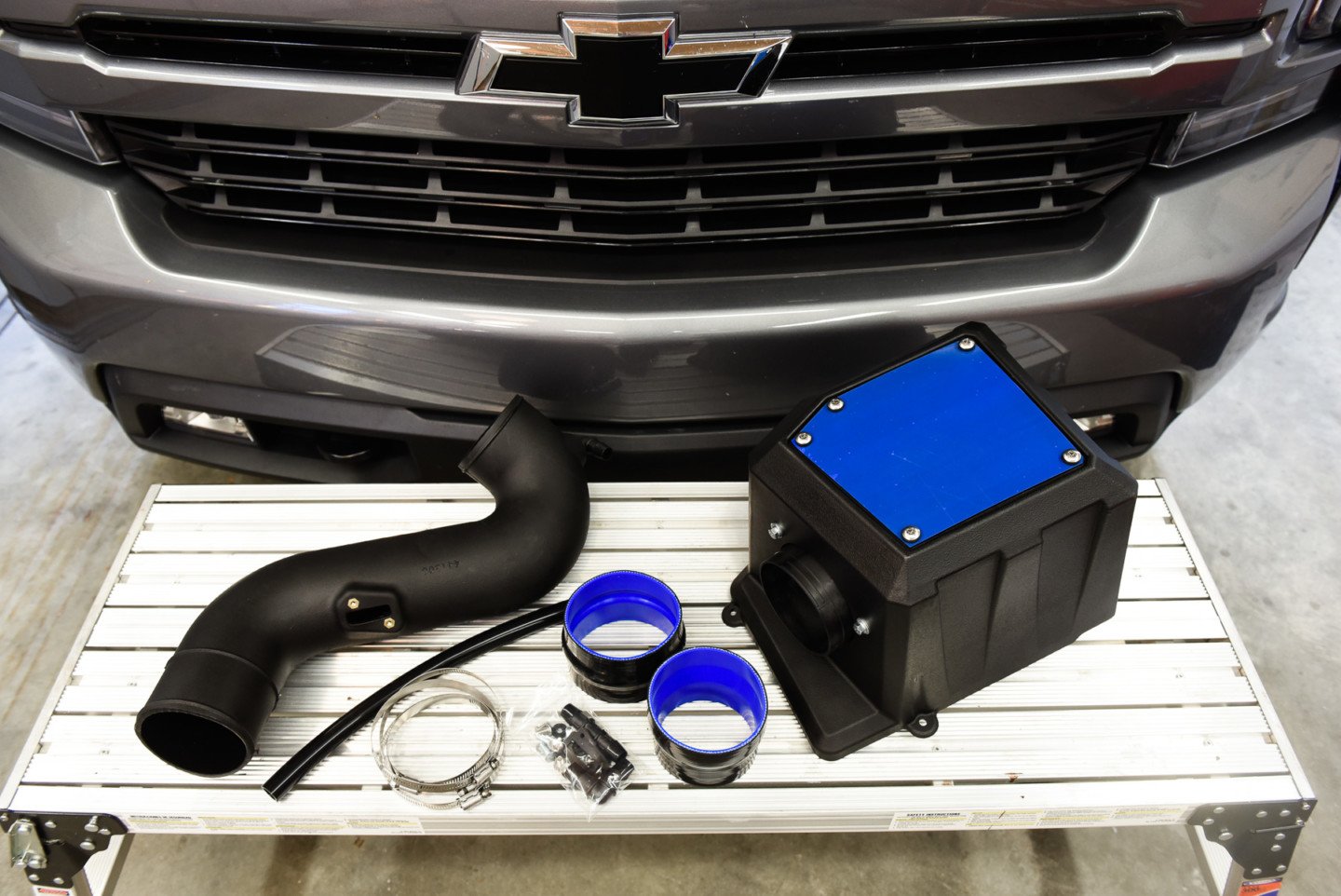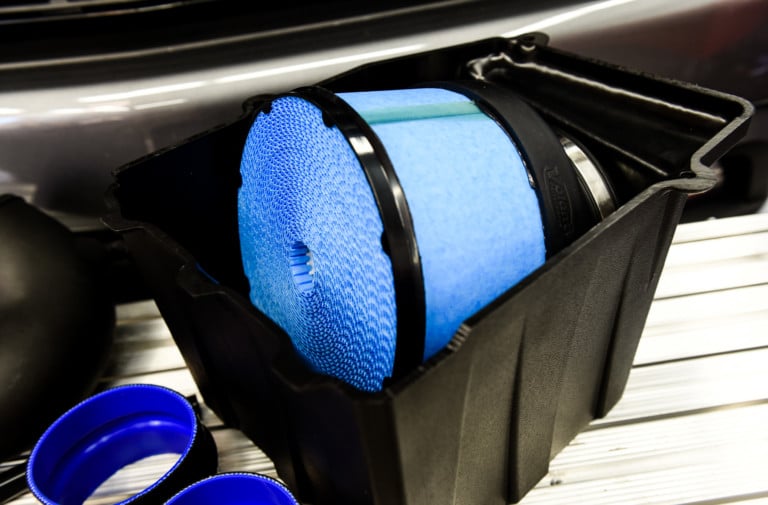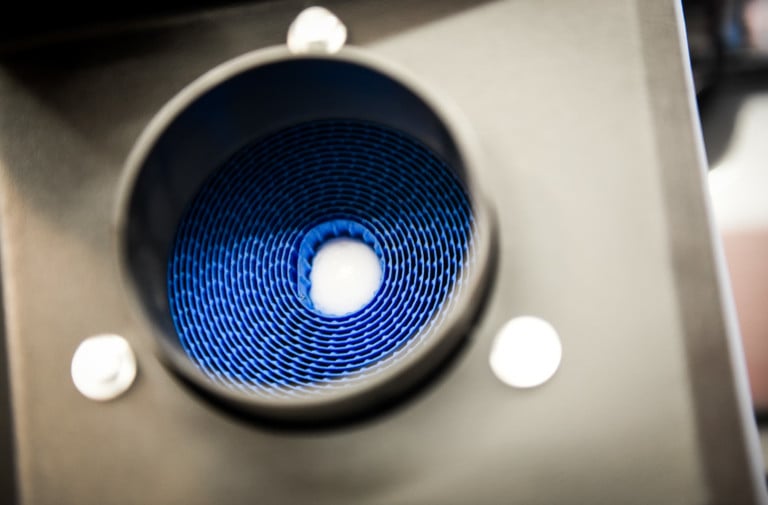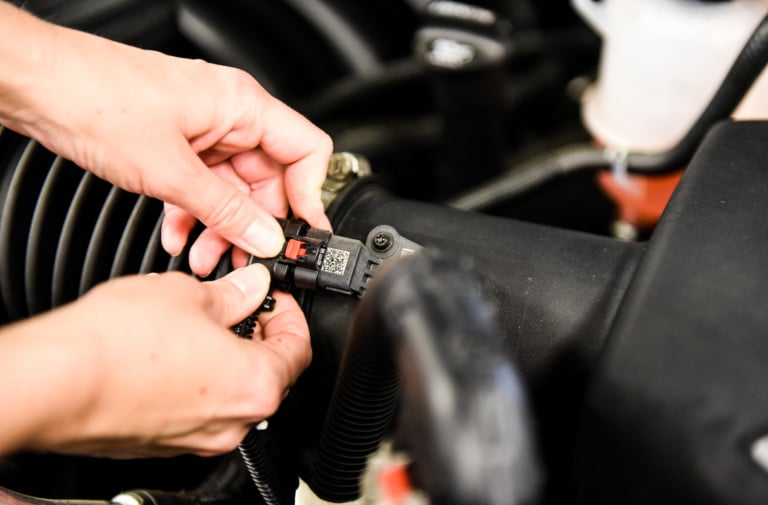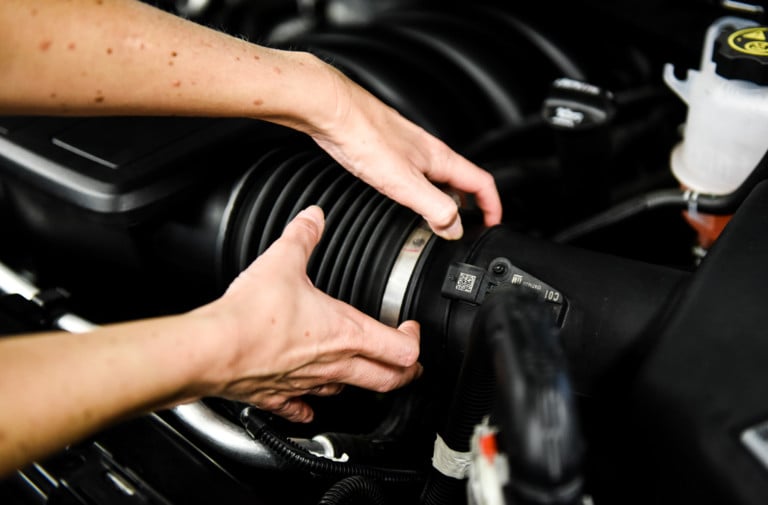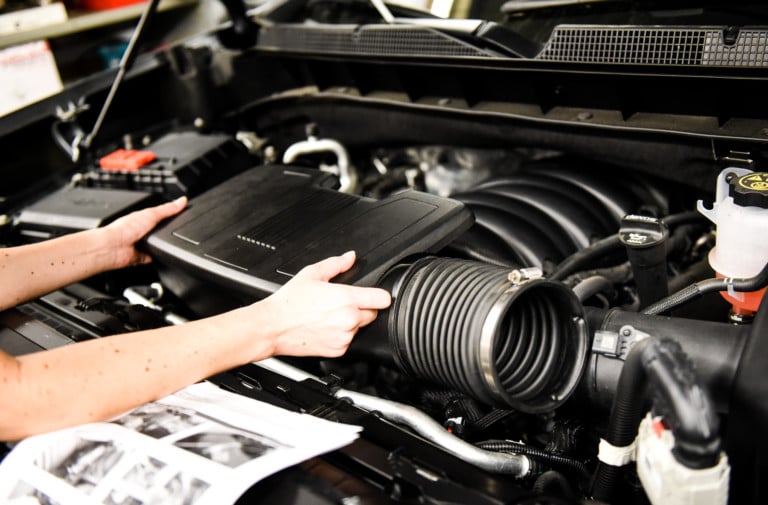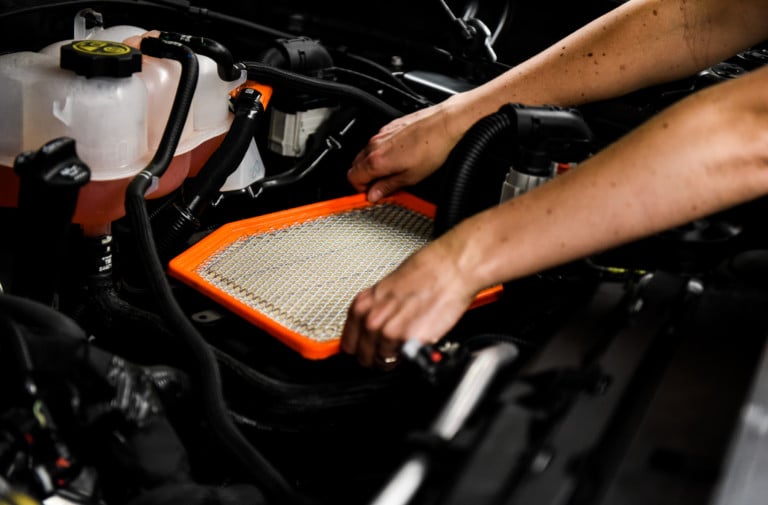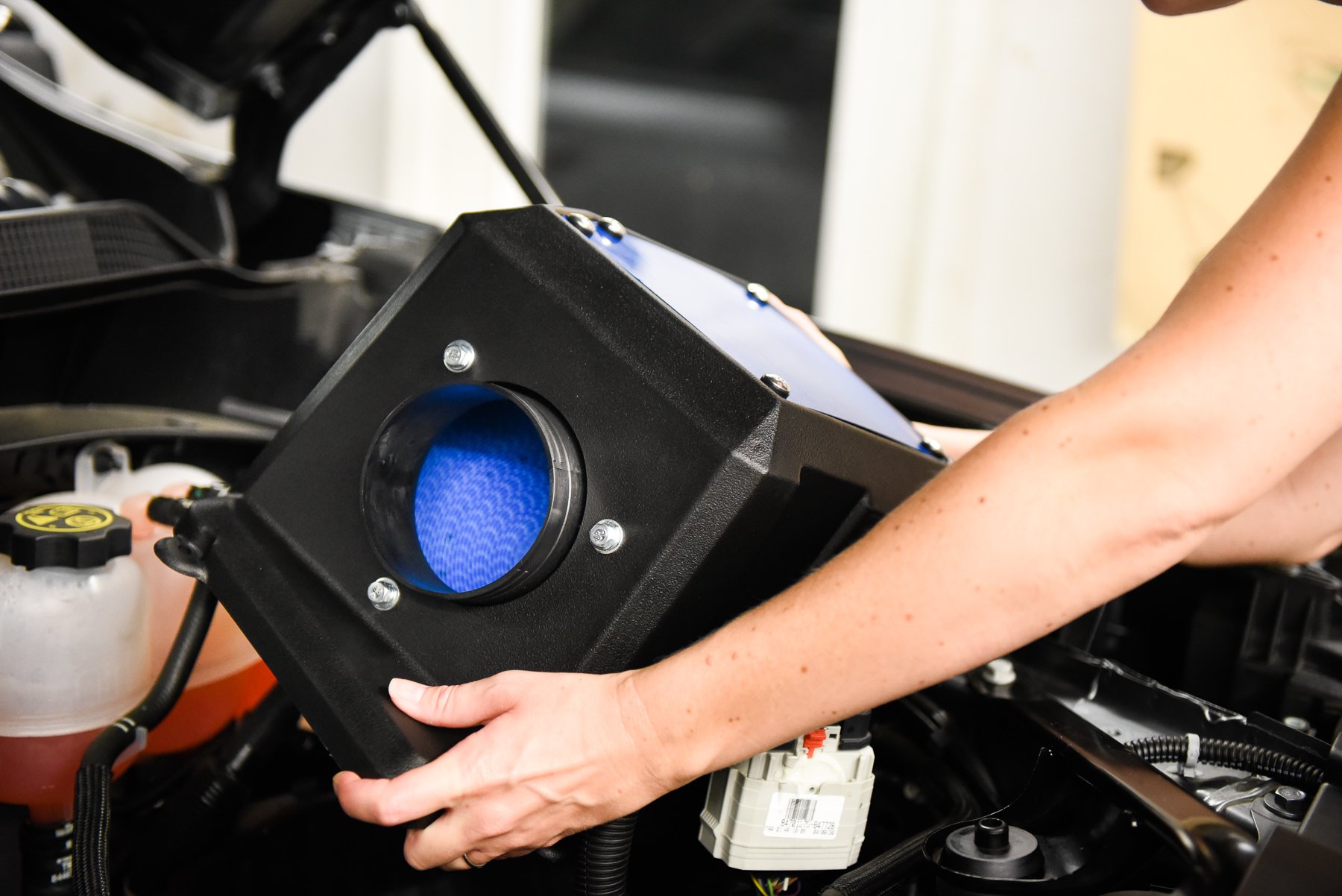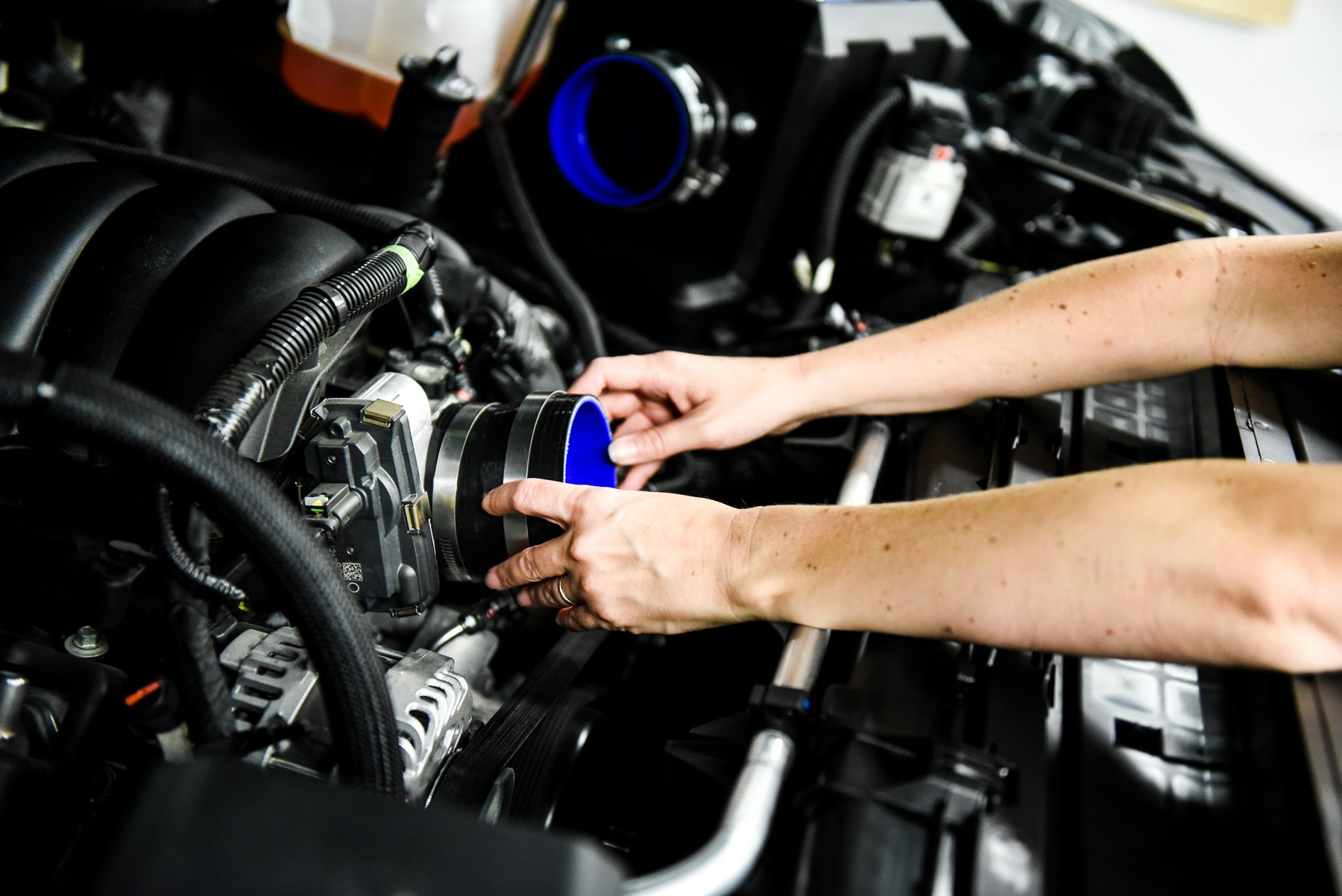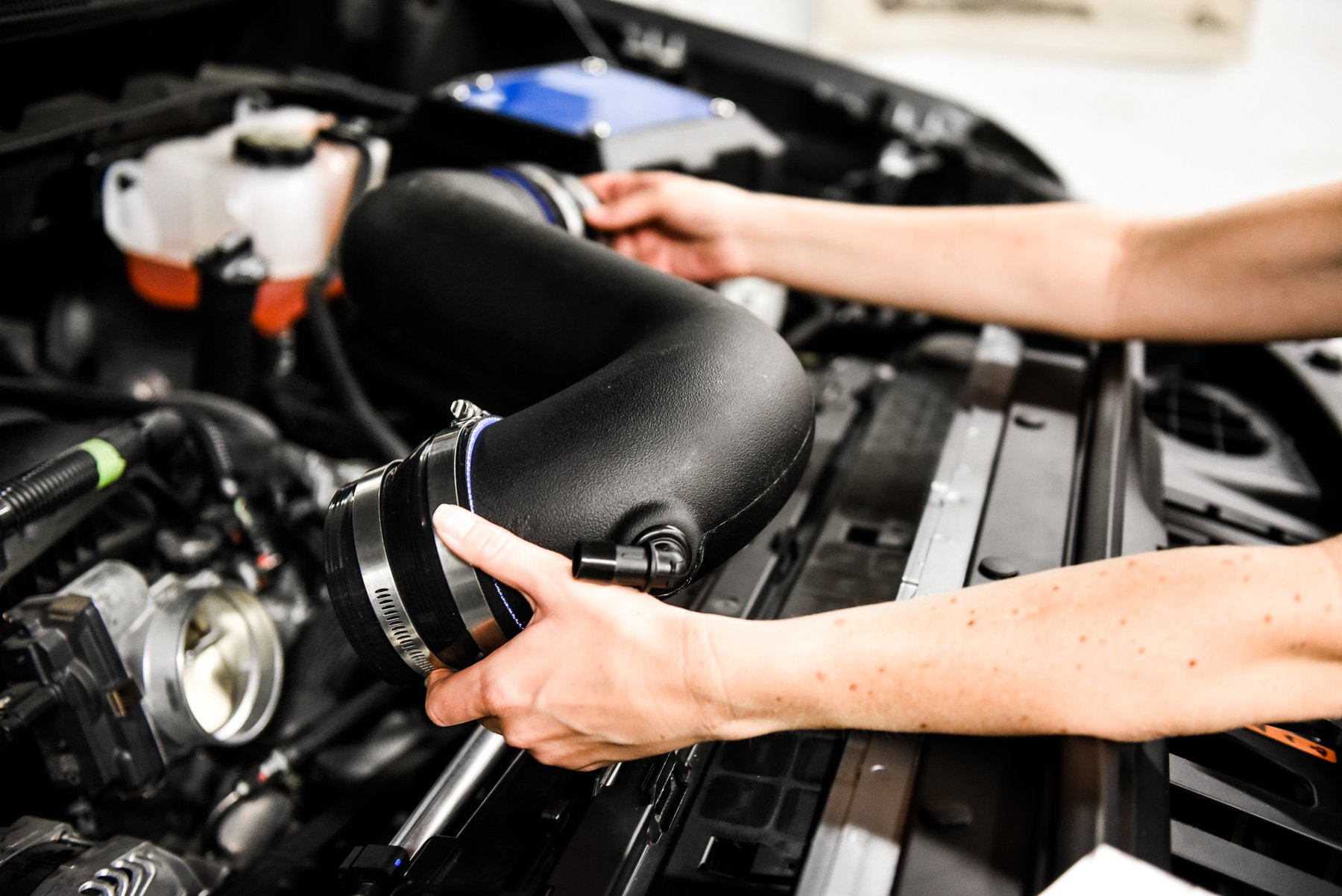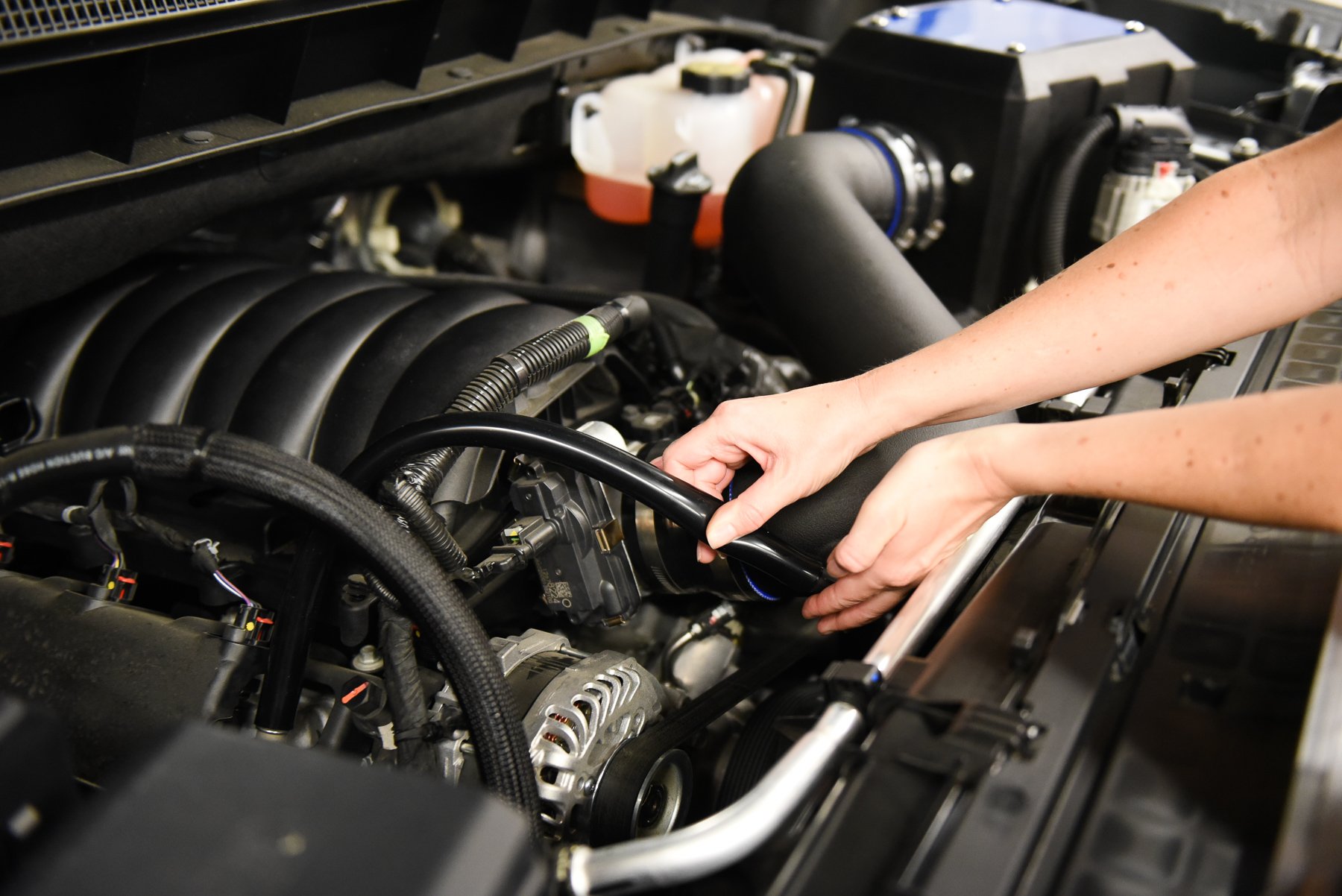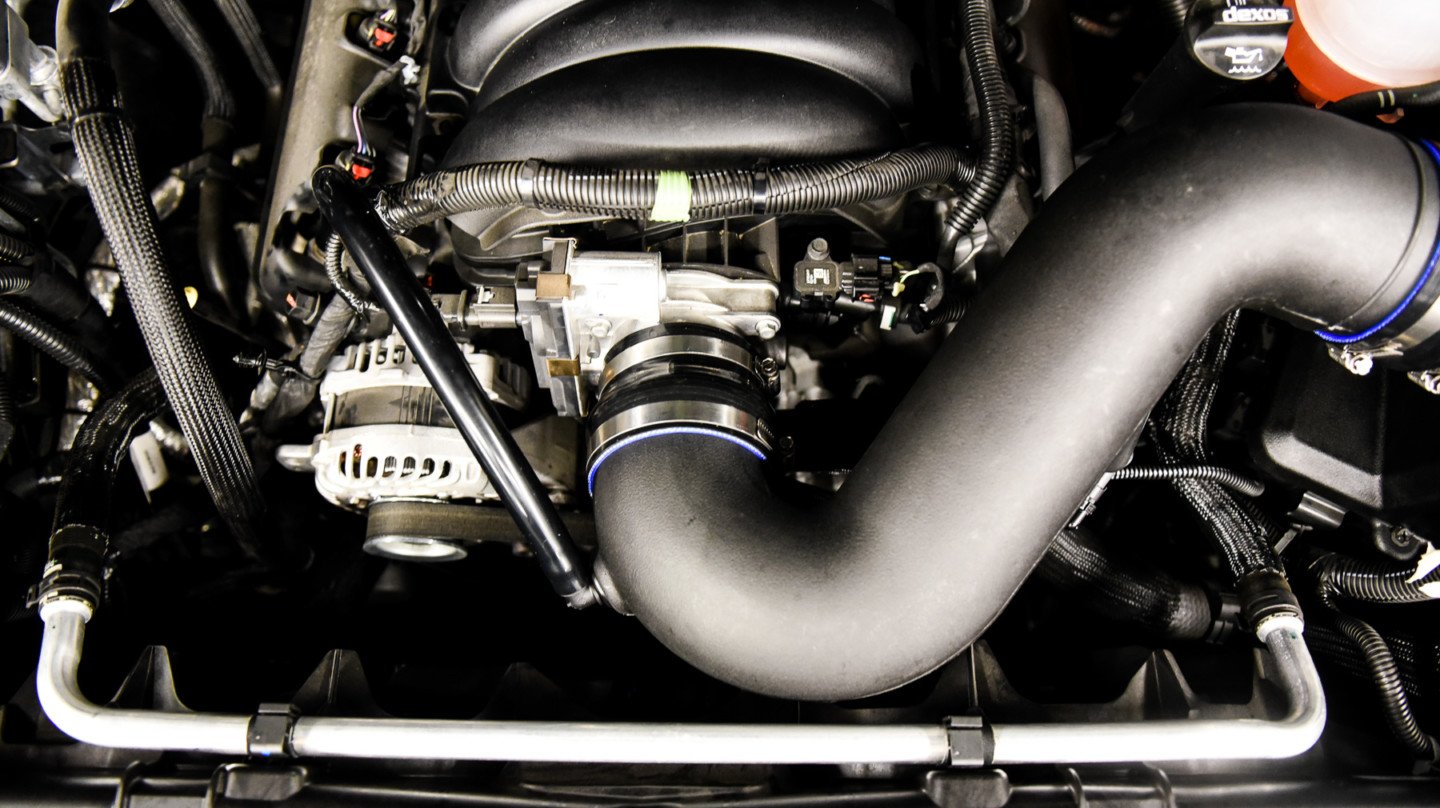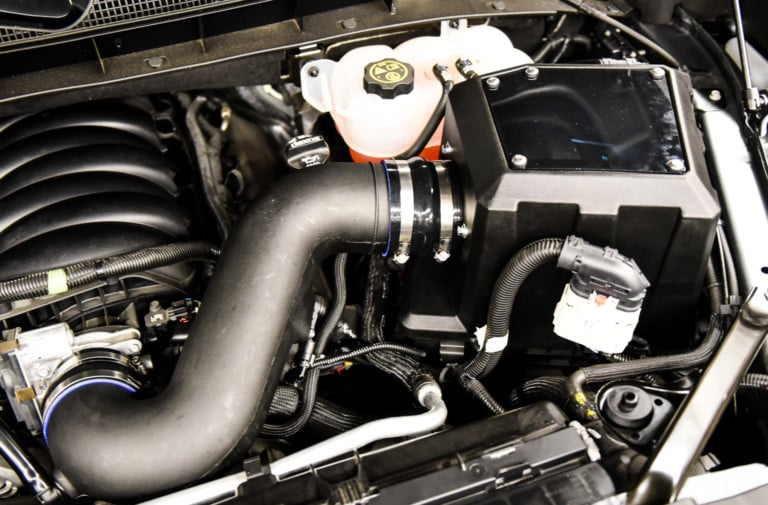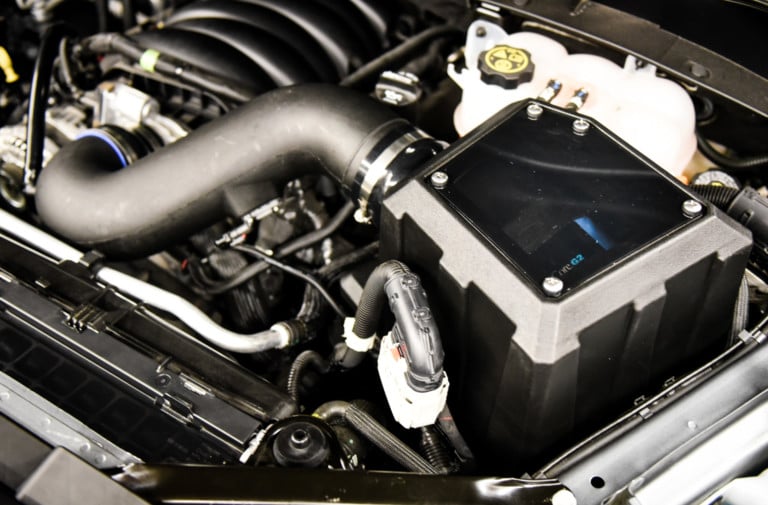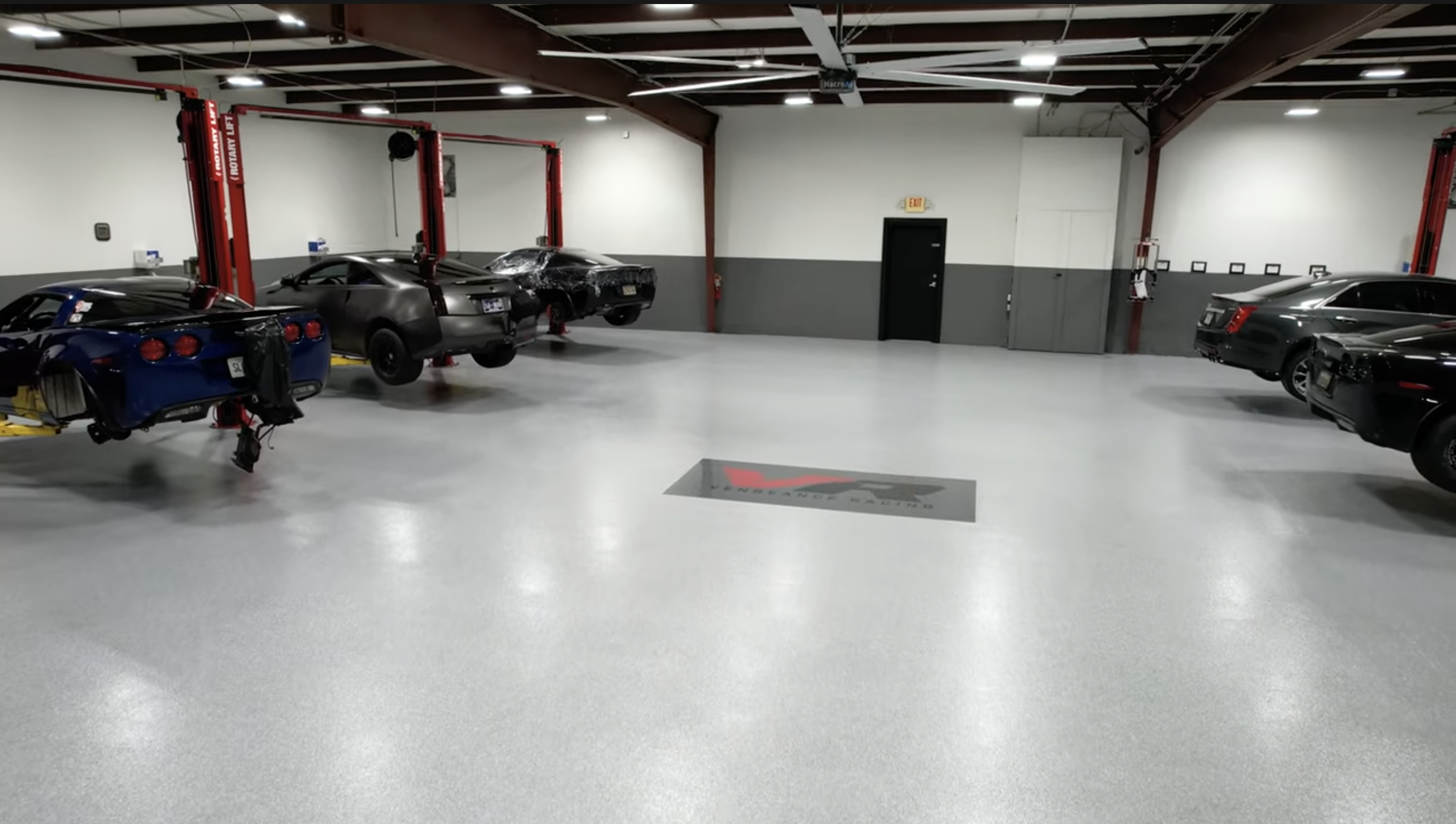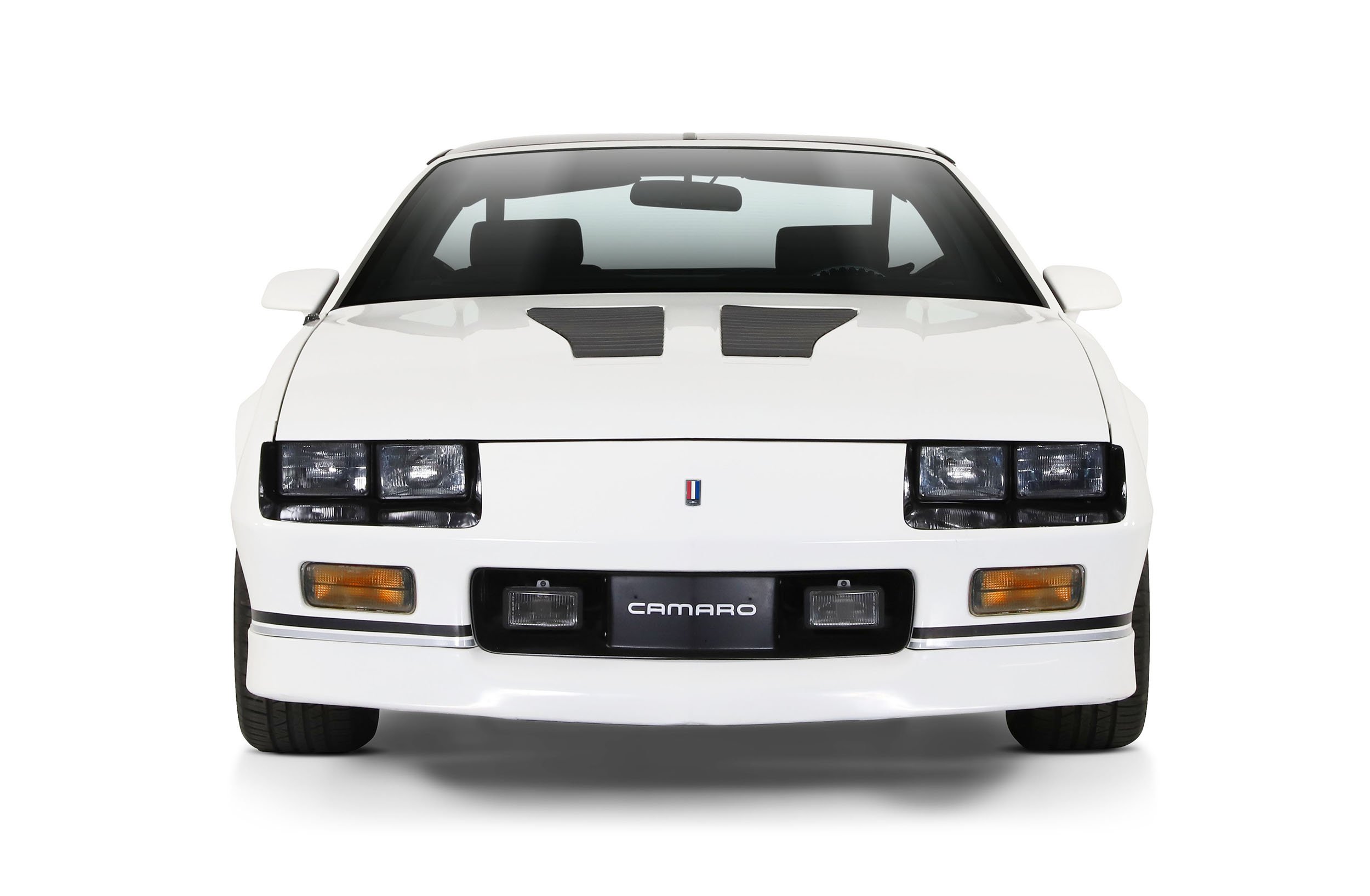A V-8 engine is meant to be heard — to breath freely from the combustion chamber all the way to the exhaust tip, delivering audibly-pleasing, throaty notes the V-6’s and turbo four-bangers found in so many of today’s pickups simply cannot equal. As we all know, however, factory mufflers and exhaust systems leave much to be desired, usually sounding more as if a hand were cupped over the manifold exit and constricting the flow than anything. And so many of us turn to the aftermarket to get the desired tone and the minor albeit still useful power and torque gains.
Exhaust tone is largely a matter of personal preference. Here in southern Indiana, the roads are littered with clapped-out Silverados with open headers, manifolds with straight pipes, and cat deletes with mufflers, belting out truly obnoxious growls as they rumble through town under the control of attentions-seeking youth. On the opposite end of the spectrum, there are what we’ll call the “over-30 crowd” who tend to prefer the more serene (relatively speaking) factory exhaust on their pickups. For the middle-aged, they’re a family truck, and later in life…well, those guys with their impeccably-maintained, high-dollar High Country’s and LTZ’s just don’t want a loud truck, period. But with the aforementioned V-6 and four-cylinders such appealing options these days, many of us who still buy the V-8 do so simply because we prefer its note and how it feels under our right foot. Again, it’s meant to be heard.
A simple cat-back kit from a reputable brand, though, is a solid compromise, with just the right number of decibels to satisfy without annoying oneself or anyone else.
We turned to the gang at Corsa Performance to improve the breathability of our 5.3L-equipped Silverado RST, utilizing its Sport edition 3-inch cat-back exhaust (Part No. 21028) and air intake system (Part No. 459536). Well over 30 myself, the days of prioritizing attention over comfort are probably behind me — in a daily driver, at least. I like the ability to hear myself think while I drive, and likewise, I want to hear my wife when she speaks (most of the time), so no straight pipes and cat deletes here. Corsa’s kit has a tone all its own — as does every exhaust brand, each tweaking its muffler designs to create distinctly unique tones. Corsa, as it has done with so many of its other popular exhaust systems, developed an oversized muffler with a nearly straight-through internal design that allows the 5.3 to really breath, and does it ever sound good.
The Sport cat-back checks a lot of boxes: it’s made of quality materials, it’s incredibly easy to install, and for those who prefer the single-tip look, it utilizes the factory RST/Z71 dual chrome tips that are already bolted to the truck, further simplifying the installation. And did we mention it sounds pretty good?
The kit is stainless steel from front to rear, utilizing North American-sourced material, featured Corsa’s patented no-drone (RSC) Reflective Sound Cancellation technology to eliminate drone, and utilizes Torca-branded clamps to further mitigate any potential for drone. Of the muffler design, Noward notes, “it’s literally straight through…if you take a 3-inch pipe like a truck muffler, you could through a cue-ball through it and it would come out the other end. There is nothing in there to get in the way of the air, so you’re getting maximum airflow, maximum performance out of it. And the Sport sound level is a nice, hearty tone — it’s nothing obnoxious, but it’s definitely more than stock.”
The RSC technology is Corsa’s approach wherein it designs each exhaust system specifically for the engine, the tune, gearbox, and exhaust layout of each make and model of vehicle, rather than carry over its Silverado muffler to a RAM or F150.
Installation is just a single cut, utilizing a chain-style exhaust cutter to remove the factory exhaust system. If you’re not concerned about beating up the bottom of your bed, and you remove the spare tire, you may be able to fish the system out without cutting it, but we weren’t about to test that theory on a new truck.
So, How’s It Sound?
The Sport cat-back kit sounds exactly as it should have from the factory: it’s got a nice rumble at cold startup that gradually wanes to roughly an equivalent decibel level at idle as stock, but with a much more satisfying tone. From a stop, the volume in the cab is just loud enough to be pleasing, without crossing the line, and at cruising speed, you’ll hardly know it’s aftermarket exhaust. But lay into it, and it really comes alive. It’s a sound that truck owners of any demographic can appreciate, and I’d say for the guys who are apprehensive about putting performance exhaust on their family pickup, it’s a supremely classy choice you won’t be disappointed with.
“Our customers have come to learn that you can get a really nice, aggressive-sounding exhaust note with an unbelievably quiet cabin experience. We really pioneered that no-drone technology, and in doing so, pioneered the best in-cab, behind-the-wheel driving experience on the road.
“OEM’s have to deliver on certain specs to put car on the road, and the systems they choose are far quieter than aftermarket, because it’s the least risky option. When you talk about the V-8 in America, though, there’s a certain segment of the consumers thats want to hear the V-8 they spent their hard-earned money on. They want to hear that, and some want to hear all of it. We have an Extreme sound level on some applications, but on this truck, Sport delivered on what we were looking for. It has a nice rumble to it, and it’s louder than stock but not too loud.”
Air Intake
Corsa approached it air intake system much in the same way it did its exhaust, aiming for quality in the materials, design, and installation. The system retains the factory lower airbox, so it’s incredibly simple to install — the hardest part of the entire process is contorting yourself around the factory air plenum to uncouple it from the throttle body. Between that and a parts-store run to buy a door trim tool to unclip the plenum from the alternator, we had about an hour in uninstalling the factory setup, and no more than 15 in installing the Corsa kit.
We disconnected the negative battery terminal to begin, disconnected and removed the MAF sensor, and then pulled the factory plenum, rubber connector, and upper airbox. Then it’s really just a matter of installing the Corsa system in the reverse order. With the large factory plenum out of the way and replaced by Corsa’s intake tube, the under-hood look and access for engine maintenance is incredibly simplified — for that reason alone we’d buy this kit again.
“The PowerCore filter has really high levels of filtration, so it filters down to much finer particulates, and is 100,000-plus mile maintenance-free — you don’t even have to clean it, you just out it in the vehicle and forget it. It’s really ideal for people that are going to be using their truck for its intended purpose in dry, dusty, dirty environments and around machinery, or you’re out in arid environments where there’s sand and other particulates floating around in the air. We’ve had people run these 200,000 miles without ever replacing them and never cause a check engine light. It’s a unique filter that’s really only available from us.”
The DryTech, conversely, offers up a little more performance by way of a less restrictive design, but comes at the cost of less protection for the engine, necessitating cleaning at around there 50,000-mile mark and consistent oil change intervals.
“We pride ourselves on bolt-on and DIY…roughly 80-percent of our consumers install their parts on their own, because they’re really that easy. We take a great deal of care when we draw up our install instructions, as well. You’re paying for a premium exhaust, and it should be a premium experience, as well. If we’ve spent the right time and energy and resources developing it, and our quality is on point, and we’re paying attention to what we’re doing, it should be an easy install…not a whole lot harder than changing an outlet in your house. You basically need a chain cutter and a 15mm socket and you can do this in your garage.”
The Verdict
Corsa publishes power and torque gains of 11 horsepower and 11 lb-ft with the air intake system, and 17 horsepower and 15 lb-ft of torque (a result of a 47-percent increase in flow) from the cat-back exhaust, for a net of 28 horsepower and 26 lb-ft with simple bolt-on’s — and you can definitely feel it under your foot, even in casual daily driving pulling away from a stop sign. It simply feels like your pickup is breathing better.
The sound, as noted, is crisp and classy and sounds as premium as Corsa set out for it to be. The air intake, for its part, adds some breathability and performance, but most importantly in my book, it really cleans things up under the hood versus the overly-complicated factory setup.
With gas north of three-bucks a gallon here in the midwest, I was hoping to see some fuel mileage efficiencies resulting from the added breathability of the Powercore filter and muffler, and while my numbers aren’t scientific, there was indeed a gain of about half a mile per gallon in combination city/highway driving. With the truck just recently cresting 5,000 miles, that could improve with time, but as Corsa itself advises, it’s bolt-on components are designed to maximize the factory tune, and so more noticeable gains in fuel economy (and power) can be gained by going to a third-party tune.


